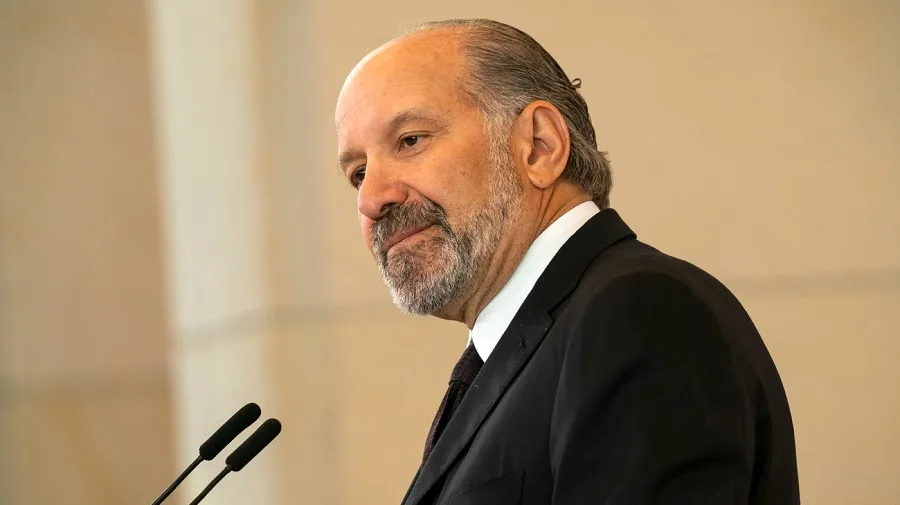Lutnick Says Trump May Accept ‘Good Enough’ EU Trade Offer—But What Qualifies Remains Vague
Lutnick Says Trump May Accept ‘Good Enough’ EU Trade Offer—But What Qualifies Remains Vague
By
David Goldfarb
Last updated:
July 28, 2025
First Published:
August 6, 2025

Photo: Yahoo
Trump Open to EU Trade Deal, Says Commerce Secretary—But “Good Enough” Terms Still Undefined
With the August 1 trade deadline fast approaching, Commerce Secretary Howard Lutnick suggested that President Donald Trump may be willing to accept a deal with the European Union, provided the offer is “good enough.” However, the criteria for such a deal remain uncertain, leaving investors and global trade analysts speculating on how close—or far—both sides are from an agreement.
“The question is, do they offer President Trump a good enough deal that is worth it for him to step off of the 30% tariffs that he set,” Lutnick said in an interview with Fox News on Sunday.
Key Meeting in Scotland: High Stakes for U.S.-EU Trade
Trump is scheduled to meet European Commission President Ursula von der Leyen in Scotland on Sunday, just days before the self-imposed deadline that could see 30% tariffs placed on a wide array of European goods exported to the U.S., including cars, steel, and electronics.
“We have a 50-50 chance, maybe less than that, but a 50-50 chance of making a deal with the EU,” Trump said on Friday, highlighting the ongoing divisions in the negotiations.
Trump added that negotiations remain stalled on "about 20 different issues," a sign that major hurdles still stand in the way of reaching a trade framework.
What Does “Good Enough” Really Mean?
The phrase “good enough,” used by both Trump and Lutnick, lacks clear parameters. However, analysts suggest it would likely involve major concessions from the EU—including the opening of EU markets to more American exports, particularly in agriculture, energy, and tech services.
“For Trump, a ‘good enough’ deal probably means seeing tangible wins he can sell to the American public—especially in an election year,” said Daniel Clifton, head of policy research at Strategas. “That means market access, reduced regulatory barriers, and visible commitments on purchasing U.S. goods.”
EU Prepares Its Own “Trade Bazooka”
In response to Trump’s tariff threat, the EU has been preparing potential countermeasures, including invoking its “Anti-Coercion Instrument”—a newly developed tool aimed at deterring and responding to economic coercion from foreign governments.
This could significantly disrupt U.S. firms operating within the EU, ranging from tech companies to agriculture exporters, if retaliatory measures are implemented.
European Commission documents leaked earlier this week show contingency plans for tariffs on:
- U.S. agricultural products (including soybeans and corn)
- Industrial equipment
- Tech components
Why This Deal Matters
The U.S.-EU trade relationship is one of the largest in the world, totaling nearly $1.97 trillion in 2024, according to the European Council. While the EU maintains a goods surplus, the U.S. remains a dominant services exporter.
The stakes are high:
- A failure to reach an agreement could ignite a new transatlantic trade war, potentially dampening global economic growth.
- A successful deal could stabilize markets and strengthen U.S.-EU cooperation amid mounting tensions with China and Russia.
Final Thoughts
While Lutnick’s remarks suggest Trump is open to walking back the threatened 30% tariffs, the lack of clarity around what qualifies as a “good enough” offer casts uncertainty over the Sunday meeting. With the August 1 deadline just days away and trade relations on the line, all eyes now turn to Scotland, where two of the world's most powerful economies will either make a deal—or escalate tensions even further.
Popular articles
Subscribe to unlock premium content
Disney’s Timeless Magic and How the Entertainment Giant Continues to Shape Culture and Innovation

Imran Khan’s Economic Missteps Amid Political Chaos in Pakistan

The Philippines’ Digital Shift How Remittances and BPO Are Fueling Growth

Disney’s Timeless Magic and How the Entertainment Giant Continues to Shape Culture and Innovation

Imran Khan’s Economic Missteps Amid Political Chaos in Pakistan

Disney’s Timeless Magic and How the Entertainment Giant Continues to Shape Culture and Innovation









